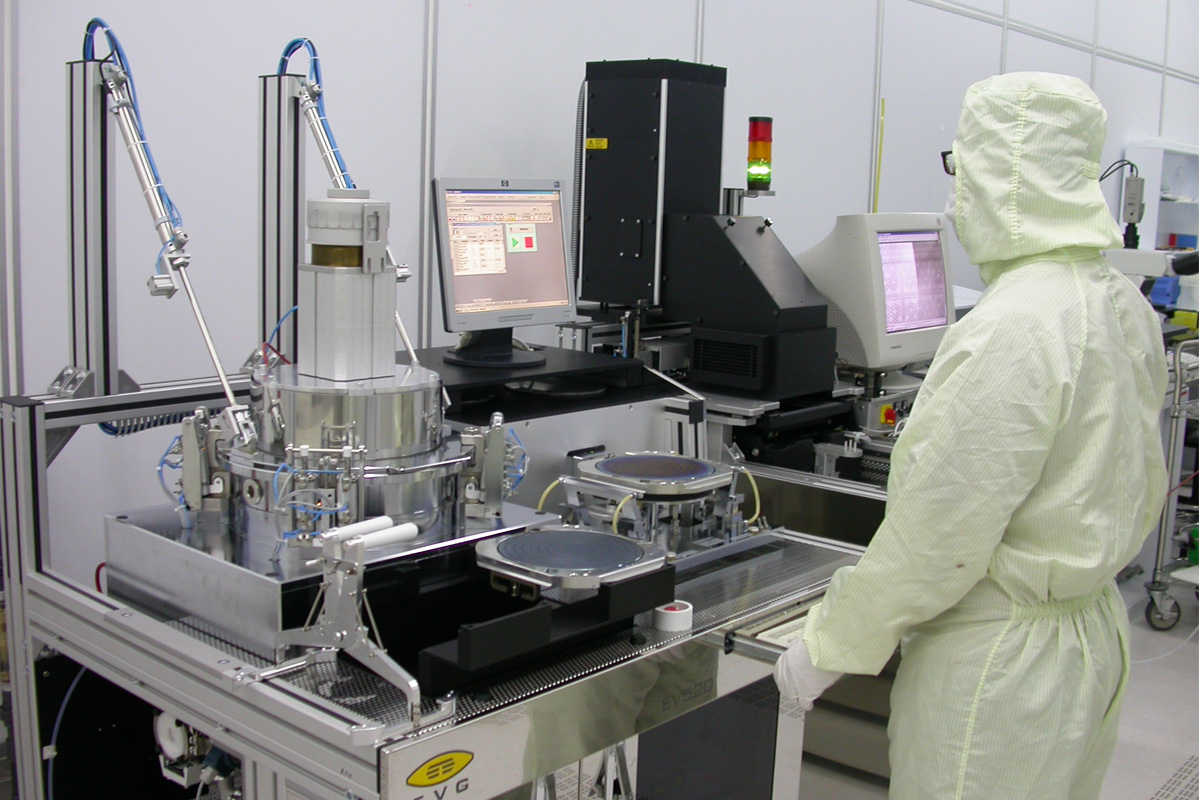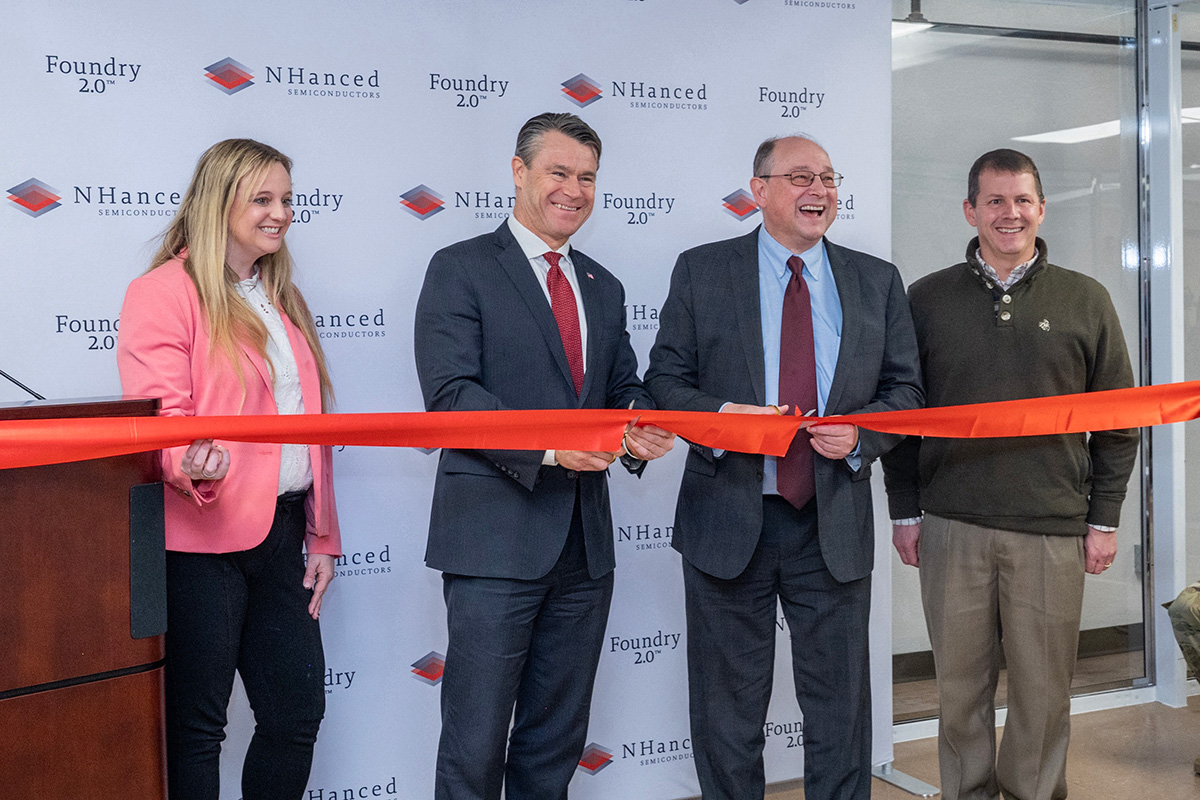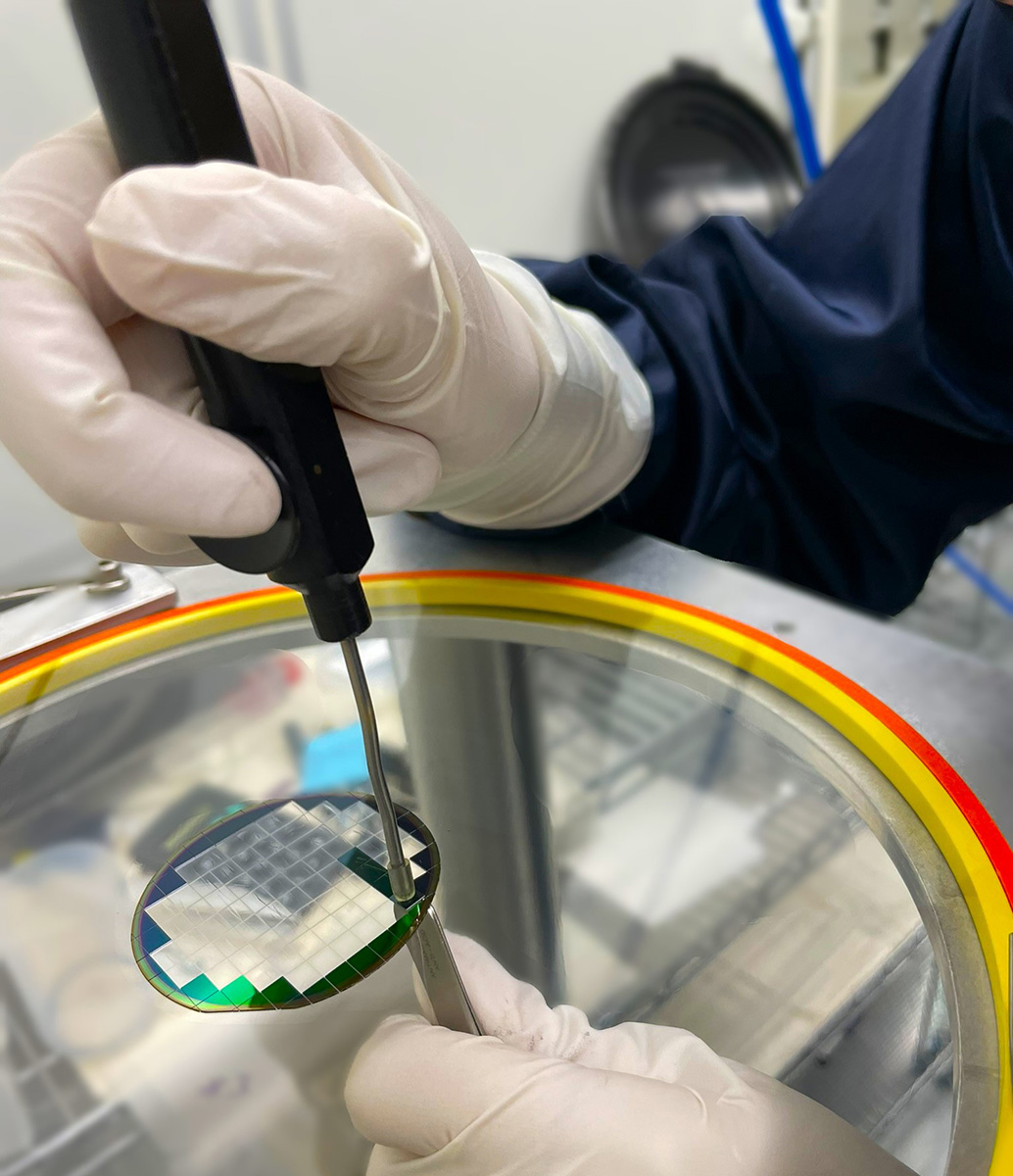Subscriber Benefit
As a subscriber you can listen to articles at work, in the car, or while you work out. Subscribe Now
While chipmakers like Intel, Micron and the Taiwanese Semiconductor Manufacturing Co. are capturing headlines with plants they’re building in the United States, a lesser-known but critically important segment of the microelectronics market is setting up shop in Indiana.
Packaging companies combine chips and other microelectronics parts together so they can be used in devices. Advanced packaging companies do the same thing in more sophisticated and complex ways—by stacking the chips, for example—that pack more computing power into smaller spaces that use less power and cost less to produce.
One of the leading advanced packagers in the United States is NHanced Semiconductors Inc., an 8-year-old Chicago company with even longer roots in microelectronics that has traditionally focused on custom package prototyping and specialized materials for limited production at its facility in North Carolina.
But NHanced is now expanding with high-volume production lines that aim to meet the growing demand for domestic microelectronics work.
And that expansion is happening in Indiana.
In January, NHanced cut the ribbon on a facility at WestGate@Crane Technology Park at Odon and is already expanding there with $236 million in planned investment. Eventually, NHanced will anchor a 10-acre, public-private development at Crane called WestGate One, where three other companies—Everspin Technologies, Trusted Semiconductor Solutions and Reliable MicroSystems—plan to put operations.
At the November 2022 announcement of that investment, the Indiana Economic Development Corp. said NHanced’s Odon operations would be the first semiconductor foundry in the country built specifically for advanced-package manufacturing. Combined, the companies are expected to bring 500 or more jobs to the complex with salaries that average more than $100,000 per year.
The IEDC has offered up to $10 million in incentive-based tax credits and up to $1 million in training grants for the company’s WestGate One plans.
This January, NHanced announced a $152 million investment in a former Cook Medical facility in Bloomington where it plans to employ at least 250 people packaging chips for higher-volume production opportunities.
NHanced founder and CEO Bob Patti—a Milwaukee native and Rose-Hulman Institute of Technology grad—estimates the company will grow as much as 400% in the next year as the semiconductor industry increases its focus on innovation and specialty production. And Patti said the Bloomington facility has plenty of room for growth.
IBJ talked with Patti about the company’s plans and why it’s focusing its investments in Indiana.

IBJ: What does NHanced do?
Patti: I often describe our factory as being just the same as a factory like Intel or TSMC [Taiwan Semiconductor Manufacturing Co.] might have, but we don’t build transistors. We have all the wiring processes that normally are used for semiconductor manufacturing. And then we do other things in our factory that add on to that, that allow us to build integrated circuits in three dimensions.
So I take finished parts or mostly finished parts wafers from normal semiconductor manufacturers out there, and we do some additional processing on top of those to add some vertical interconnected metal and then we can stack those together and build a tower.
Semiconductors today are pretty much all one-story buildings. And we are able to take many one-story buildings and stack them on top of each other and build a multistory building. And the benefit to that is that it physically takes a lot less space. … I get a lot of reduction in the size and weight that goes with it. …
The other benefit we get out of this is that making those wires shorter removes a lot of power in the device. So the advanced packaging reduces power, makes it smaller, and it runs faster.
We can save some money in all of it. And certainly it is a lot less expensive to improve the performance of a device like this than it is to go to another generation of technology to build smaller transistors today.
Tell me about the kinds of devices that your technology is going into.
Most of what we build is for smaller markets today. It’s industrial and medical and defense applications. We do some interesting development, though, for high-volume applications like cell phone cameras. … We build parts for satellites.
We’re very much a niche provider today, and it’s because our current factories, like in North Carolina, which is where I am today, are geared to what we call high-mixed, low-volume manufacturing.
And in fact, one of the reasons that we’re building factories in Indiana is to go to higher-volume manufacturing so we can address a larger segment of the market.
Is the increased demand for what you do a reflection of an overall increase in demand for products, or is it because of the emphasis on U.S. manufacturing of micro-electronics and the funding approved for that?
I’m sure that the [emphasis on] manufacturing and microelectronics plays a role. We certainly have people that are looking at using us because they don’t want to build it in the Far East anymore.
But the industry has realized how much more value they can get from advanced packaging versus going to the next-generation technology at a normal semiconductor fab. And our industry—for all of its high-tech, leading-edge technology—is pretty slow to change the direction in which it goes.
People think of it as being very dynamic, but you have to think of it this way: Most semiconductor companies are making multibillion-dollar investments today, and they’re risk-averse. … So they are very slow to changing the way that they do business.
You have a headquarters near Chicago and a manufacturing site in North Carolina. What made you look at Indiana?
We were involved with Navy Crane. They’re a large customer of ours. And I hired some people in southern Indiana to help me address the needs of that customer. And as I spent more time interacting there, I saw a business opportunity. I also went to school in Indiana.
That’s right. Rose-Hulman.
So I’m very familiar with the area and people and work ethic. It seemed to make a lot of sense to do something there. You guys have good resources.
A lot of [micro-electronics companies] are building in the Sun Belt. Arizona has a whole bunch of construction going on, but I’m certainly concerned about water there. It’s not like there are extraordinary sums of water. … If you compare it to what you need for irrigation of land, the amount of water for [a semiconductor site] is small, but without it, you can’t build. So I kind of wonder about building these large semiconductor plants in the desert. That doesn’t seem to be the wisest thing to do.
Also, in a lot of these places that are growing, they do have large workforces, and that’s the positive side. But people also have a lot of opportunity. They tend to move around. It’s hard to have a sticky workforce.
We’ve been very blessed in that I do have employees that worked for me for a long time. The gentleman who runs my fab here in North Carolina has been with me since 2001 [including at the company that eventually spun out NHanced]. That kind of longevity is very important. You have retained knowledge, institutional knowledge. And if you have a high turnover rate of personnel, it’s very hard to have that institutional knowledge stick with the company.
And in southern Indiana, you have more ability to retain a workforce.
Another facet of it is that, in Indiana, you have Purdue University, you have Notre Dame, you have Rose, you have IU. We have a lot of places we can draw engineers from. I’ve joked with people that the problem in Indiana is, the engineers graduate, and they get a diploma and a plane ticket, and they leave.

Is that what happened to you?
Yeah. I moved to the Chicago area after I graduated. I don’t think I had any opportunities in Indiana when I graduated. It’s not that people necessarily want to leave Indiana, but they want to get a job.
So I think we have a huge population of people to draw from who are already highly skilled because of their education. You have other institutions like Vincennes [University] and Ivy Tech [Community College], which will help backfill our workforce. We use a lot of engineers, so the universities are key, but we also have a lot of high-skill labor, and those are the type of folks that you get out of the Ivy Tech and Vincennes.
Our general plan is, we will bring from the outside probably about 5% of the workforce to seed our factories, but 95% of the workforce we’re going to develop locally.
When you first decided to invest at Crane, did you know then that you might be also adding a larger plant like you are in Bloomington? Or did it all evolve?
It evolved. We started in Odon at WestGate. And initially we just had some shared office space at WestGate Academy, and then we leased some space. We have been working with a local developer. They’re trying to build a larger factory at the WestGate site that’s taking some time. I don’t know that it’ll be done before 2026, maybe even 2027.
So in the meantime, we’ve had a lot of demand. Like I say, the marketplace we’re in is almost doubling at an annual rate. And in fact, we quadrupled our revenue last year, and we will double or triple again this year. So that’s why I say we’re a 20-year overnight success.
Tell me about working with the folks in Indiana. What has it been like to try to put a plant in Indiana and deal with the regulatory and incentive processes?
I think your business development activities in the state are really fantastic. They’re problem solvers.
I certainly have had a lot of local help. We enlisted people who are familiar with the [state of] Indiana, the [Indiana Economic Development Corp.] and the counties, like the Monroe County Economic Development Board.
When you run up against problems here, someone says: ‘Here’s the person you need to talk to.’ They help you figure it out. … That makes it so much easier to really navigate this.
Is that different than in other states?
It’s funny, because here in North Carolina, I’ve talked with the state, and they had a little bit of interest. But they wanted me to … relocate the factory an hour and a half away. We really don’t want to do that. The employees don’t want an hour drive to the office … .
In Illinois, I’ve talked with the state from time to time, but they don’t follow through. We chat and a couple of things happen, and then they look at other things… . I’m a square peg in a round hole, and they really haven’t pursued it.
I’d have to say Arizona has been diligent. They have reached out, and they have pinged me; they would love me to move to Arizona. And there’s foreign countries that have reached out. And I would say that foreign countries probably do more to communicate and try to get you to move offshore than most states do.
Could there be additional expansion plans in Indiana?
I’m sure it is possible. I think we have bitten off all that we can chew for the next few years. But sure. We have a lot of expansion capability in Bloomington.
The building at the Cook site that we’re moving into is like five times the footprint of our current fab (in North Carolina), and they are more than willing to lease me more space. So for the moment, I think we’re just focusing on building out and growing into the spaces that we already have identified.
In the long term, yeah, I think there’s lots of opportunity, but no immediate plans.•
Please enable JavaScript to view this content.
